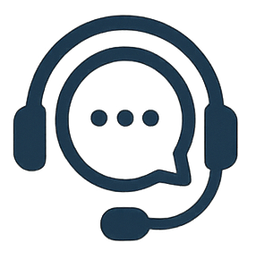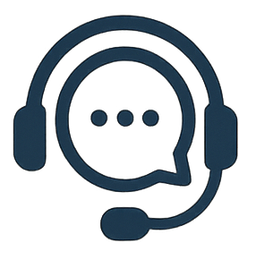First Contact Resolution (FCR) rates are directly linked to how agents wrap up their interactions. When customers feel rushed or their concerns aren't fully addressed, they often have to reach out again - leading to frustration and higher operational costs.
Common challenges contact center agents face during interaction closure include:
- Time pressure from strict Average Handle Time (AHT) metrics
- Script fatigue from repetitive closing questions
- Missed opportunities to address underlying customer needs
- Channel-specific barriers in text, voice, and email communications
- Balance struggles between efficiency and thorough issue resolution
These challenges affect both customer satisfaction scores and agent performance metrics. Contact center managers must provide their teams with the right tools and freedom to handle these crucial closing moments effectively.
The following five essential behaviors create a framework for successful interaction conclusions across all customer support channels. These practices help agents move beyond mechanical checklist completion toward meaningful customer care that drives lasting satisfaction and loyalty.
1. Sincerely Inviting Additional Customer Needs
The classic question "Is there anything else I can help you with?" has become a mechanical checkbox item for many contact center agents. This scripted approach creates a barrier between genuine human connection and effective customer service.
Creating Authentic Dialogue
A sincere invitation for additional needs stems from genuine care and attention. When agents ask follow-up questions naturally within the conversation's context, customers feel valued and understood. Consider these authentic approaches:
- "Based on what you've shared, you might also want to know about..."
- "I notice you mentioned [specific detail]. Would you like me to explain how this affects..."
- "Let me make sure I've addressed all your concerns about [topic]"
Channel-Specific Techniques
Voice Interactions
- Use natural pauses and tone variations
- Mirror the customer's communication style
- Listen for hesitation or uncertainty in their voice
Text-Based Support
- Break complex solutions into digestible chunks
- Prompt for clarity on specific points
- Use clear, concise language while maintaining warmth
Email Communications
- Summarize key points addressed
- Include relevant resources proactively
- Create easy response opportunities
Building Trust Through Engagement
Robotic responses damage customer trust and reduce the likelihood of uncovering underlying issues. When agents demonstrate active listening and genuine interest, customers feel comfortable sharing additional concerns. This open dialogue enables agents to:
- Identify potential future challenges
- Provide comprehensive solutions
- Build lasting customer relationships
- Prevent repeat contacts for related issues
The key lies in transforming the standard closing question from a perfunctory task into an opportunity for meaningful engagement. Agents who master this skill create stronger customer connections and deliver more effective support outcomes.

2. Empowering Agents to Anticipate and Address All Customer Issues
Contact center success extends beyond meeting basic metrics like Average Handle Time (AHT). True customer satisfaction emerges when agents receive the autonomy to address issues comprehensively, even if it means longer interaction times.
Breaking Free from Time Constraints
- Rigid time metrics can force agents to rush through complex issues
- Quality resolution often requires additional investigation time
- Empowered agents deliver higher customer satisfaction rates
- Long-term customer loyalty outweighs short-term efficiency gains
Contextual questioning serves as a powerful tool for anticipating customer needs. Skilled agents learn to identify potential follow-up concerns through careful listening and strategic inquiry:
- "Based on what you've shared about your usage, you might experience [related issue]. Would you like me to explain how to prevent that?"
- "Many customers with similar setups also ask about [connected feature]. Can I walk you through that?"
- "I notice you're using [product A]. Have you considered how it integrates with [product B]?"
Best Practices for Ticket Management
- Keep tickets open until receiving explicit customer confirmation
- Document all attempted solutions and customer responses
- Set appropriate follow-up reminders for complex issues
- Track related issues under a single ticket for comprehensive resolution
Contact center managers play a crucial role in fostering agent empowerment:
- Provide comprehensive product training
- Encourage creative problem-solving approaches
- Reward thorough issue resolution
- Support agents' judgment in complex situations
- Create metrics that balance efficiency with quality
A ticketing system should reflect this commitment to complete resolution. Agents need the authority to:
- Extend ticket lifecycles when necessary
- Collaborate with other departments
- Schedule follow-up interactions
- Access advanced troubleshooting resources
3. Avoiding Rushed or Forced Call Endings
Rushed call endings create a ripple effect of negative outcomes in customer service interactions. When agents hastily conclude calls, First Contact Resolution rates drop by up to 25%, leading to repeat contacts and frustrated customers. Next Issue Avoidance suffers too - customers who feel pushed off the phone often return with issues they hesitated to bring up during the rushed interaction.
The Hidden Impact of Supervisor Metrics
Contact center supervisors inadvertently encourage rushed closures through:
- Strict adherence to Average Handle Time targets
- Checklist-based quality monitoring
- Emphasis on call volume over resolution quality
- Rewarding quantity of interactions over quality outcomes
These practices push agents to prioritize speed over thorough issue resolution, creating a cycle of incomplete service delivery.
Effective Techniques for Natural Call Closure
Skilled agents use these methods to gauge customer readiness:
- Active Listening Signals
- Confirmation Techniques
- Customer-Paced Dialogue
Active Listening Signals
- Noting changes in customer tone
- Recognizing verbal cues of satisfaction
- Identifying natural conversation breaks
Confirmation Techniques
- Summarizing resolved issues
- Asking specific follow-up questions
- Allowing comfortable silence for customer reflection
Customer-Paced Dialogue
- Following the customer's conversational rhythm
- Matching their communication style
- Reading between the lines for unspoken concerns
Real-Time Response Assessment
Agents should watch for these customer signals:
- Positive acknowledgment of solutions
- Relaxed conversation pace
- Voluntary expression of satisfaction
- Natural conversation closure
When customers exhibit these signs, agents can confidently progress toward call conclusion without forcing an abrupt ending. This approach maintains the human connection while ensuring comprehensive issue resolution.

4. Leveraging Customer Satisfaction Surveys Effectively at Interaction Close
Customer satisfaction surveys are powerful tools for understanding service quality beyond basic metrics like call duration or resolution status. These surveys capture valuable insights into customer experiences, emotional responses, and unmet needs that might not come up during the interaction.
Strategic Survey Implementation:
- Ask for survey participation after confirming all issues are resolved
- Frame the request as an opportunity to improve future service
- Personalize the invitation based on the interaction context
- Respect customer time by highlighting the survey's brevity
Best Practices for Survey Requests:
"I'd love to hear your thoughts on our interaction today. Would you be willing to complete a brief 2-minute survey?" "Your feedback helps us serve you better. Could I send you a quick survey about today's experience?"
Agents should gauge customer receptiveness before presenting survey options. A customer who expressed frustration during the interaction might need additional support rather than an immediate survey request. The timing of survey invitations impacts response rates and quality of feedback.
Survey Delivery Methods:
- Post-call automated transfer
- Email follow-up within 24 hours
- SMS link for mobile users
- Chat window integration for digital channels
The collected data helps identify patterns in customer experiences, agent performance gaps, and opportunities for service improvements. This information drives meaningful changes in contact center operations and customer support strategies.
5. Fostering Human Connection Through Effective Communication Techniques
Building genuine human connections transforms routine customer interactions into meaningful experiences. Scripted responses create barriers between agents and customers, making interactions feel mechanical and impersonal.
Personalized Communication Strategies:
- Use the customer's name naturally throughout the conversation
- Reference specific details from their situation
- Match the customer's communication style and energy level
- Share brief personal experiences when relevant
The right phrases can demonstrate authentic care and commitment. Here are powerful alternatives to standard scripted closings:
"I understand how important this is to you, and I want to make sure we've covered everything you need"
"Based on what you've shared, let me check if we should look into [related aspect] as well"
Language That Builds Trust:
- "I'll personally ensure this gets resolved"
- "You can reach out to me directly if you need any clarification"
- "I appreciate you bringing this to our attention"
- "Let's work through this together"
Authenticity shines through micro-behaviors - small pauses to listen, acknowledging emotions, and using conversational language. These subtle touches help customers feel heard and valued rather than processed through a system.
Remember to adapt your communication style based on customer cues. Some prefer direct, business-like interactions, while others appreciate warmth and casual conversation. Reading these signals helps create the right balance for each unique interaction.
Conclusion
Contact center success depends on empowering agents to deliver exceptional customer experiences. The five essential behaviors outlined here - inviting additional needs, resolving issues completely, closing interactions patiently, implementing surveys strategically, and building genuine connections - lay the groundwork for improving first contact resolution rates.
Contact center leaders must move away from strict scripts and metrics-driven approaches. Your agents need the freedom to:
- Build genuine connections with customers
- Take necessary time to resolve issues completely
- Develop their own authentic communication style
- Trust their judgment in handling customer interactions
Investing in comprehensive training programs focused on these behaviors equips your team with the skills to conclude customer interactions effectively. When agents feel trusted and supported, they create meaningful experiences that drive customer satisfaction, loyalty, and lasting business success.
Remember : The way you end each interaction shapes your customer's lasting impression of your brand. Give your agents the freedom to make it count.
FAQs (Frequently Asked Questions)
Why is sincerely inviting additional customer needs important before concluding interactions ?
Sincerely inviting additional customer needs fosters genuine dialogue, helping uncover hidden or additional issues. Avoiding robotic or scripted questions builds trust and engagement, enhancing the human connection in customer service across voice, text-based, and email support channels.
How can contact center agents be empowered to anticipate and address all customer issues effectively ?
Agents should have the freedom beyond strict metrics like average handle time (AHT) to prioritize comprehensive issue resolution. Utilizing contextual questioning helps anticipate follow-up concerns, while managing ticketing systems to keep issues open until fully resolved ensures thorough customer support. Contact center managers play a crucial role in empowering agents as professionals focused on customer success.
What are the risks of rushed or forced call endings in customer interactions ?
Prematurely ending interactions can negatively impact First Contact Resolution (FCR) and Next Issue Avoidance rates. Supervisors reinforcing minimum behaviors might inadvertently encourage rushed closures. Agents should use techniques to genuinely gauge customer readiness, avoiding forced conclusions that can diminish satisfaction and resolution effectiveness.
How should customer satisfaction surveys be leveraged effectively at the close of interactions ?
Surveys serve as vital tools for measuring success beyond immediate resolution metrics. To avoid disrupting natural interaction flow, agents should invite customers to participate thoughtfully, choosing appropriate timing and phrasing that align with a smooth and positive conclusion of the support experience.
Why is fostering human connection through effective communication techniques essential during call closure ?
Personalized communication over scripted interactions reinforces care and commitment to resolving all issues. Using empathetic language and phrases strengthens the human connection in customer service, leaving customers feeling valued and supported at the end of their interaction.
What are the 5 essential behaviors before concluding customer interactions to improve first contact resolution rates ?
The five essential behaviors include: 1) Sincerely inviting additional customer needs; 2) Empowering agents to anticipate and address all issues; 3) Avoiding rushed or forced call endings; 4) Leveraging customer satisfaction surveys effectively at interaction close; and 5) Fostering human connection through effective communication techniques. Implementing these best practices helps contact center leaders empower agents with autonomy and training focused on delivering exceptional customer service.









